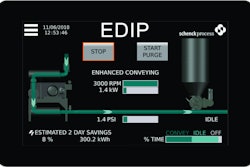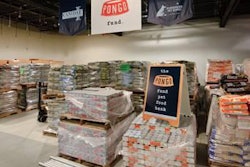
Small flocks of chickens, especially laying hens, became more popular in the United States in urban and suburban areas during the past decade, fueled by several human food and lifestyle trends. People increasingly want to know that their own meat, eggs and poultry come from well-fed, well-treated animals raised under ecologically and socially sustainable conditions. At the same time, urban farming and homesteading seeks to restore some self-sufficiency to lives otherwise disconnected from agriculture.
“The reason that people are getting hens, first and foremost, is to have fresh eggs,” said Amanda Terbrock, senior brand manager for homestead marketing at Manna Pro, said. “They want to know their food, they want to be connected, they want their families to be connected to where their food comes from.”
As backyard poultry flocks grow, the pet food industry responded to the increasingly suburban lifestyle of livestock. At SuperZoo 2019, backyard hens had their own section for the first time, along with hen-centric new pet foods and treats. In October 2019, Manna Pro released a non-GMO line of chicken feed. That product fits into the mentality of many backyard chicken flock keepers, Terbrock said.
“That lifestyle typically leads into non GMO preferences or even organic preferences. So we try to offer a full range of whether it's conventional that's more affordable or you can you can choose our non GMO line or even or our organic line, if you desire to have that outcome for your egg as well.”
Backyard chickens change from livestock to pets
The American Pet Product Association included questions about backyard chicken flocks for the first time in its 2019-2020 survey on U.S. pet ownership. In APPA’s survey of 10,090 current pet owners, 10% reported owning backyard chickens, which equated to approximately 10 million U.S. households. Owners of other pets were more likely to own poultry. Households with young children also were more likely to have poultry pets with 12% of respondents versus 6% in homes without little kids.
Hens may have started out as functional backyard egg-layers, but have begun fulfilling roles traditionally held by traditional pets. Eight out of 10 hen households reported considering their poultry to be pets. As hens become feather babies, owners build emotional attachments and humanize the hens, Terbrock said during a tour of her own backyard coop. Small-scale chicken flocks make up much of her company’s poultry business.
“We produce some big bags,” she said, “but we really focus on more of that backyard, under 20 flock that people are really giving attention to and they're spoiling and they're treating more like pets. They're giving them all names.”
Her own hens also have names, including Toothless and Karlie, after a tamable dragon and St. Louis icon, model Karlie Kloss. That humanization of hens among other pet owners may help the birds transition from livestock to feather babies.


















